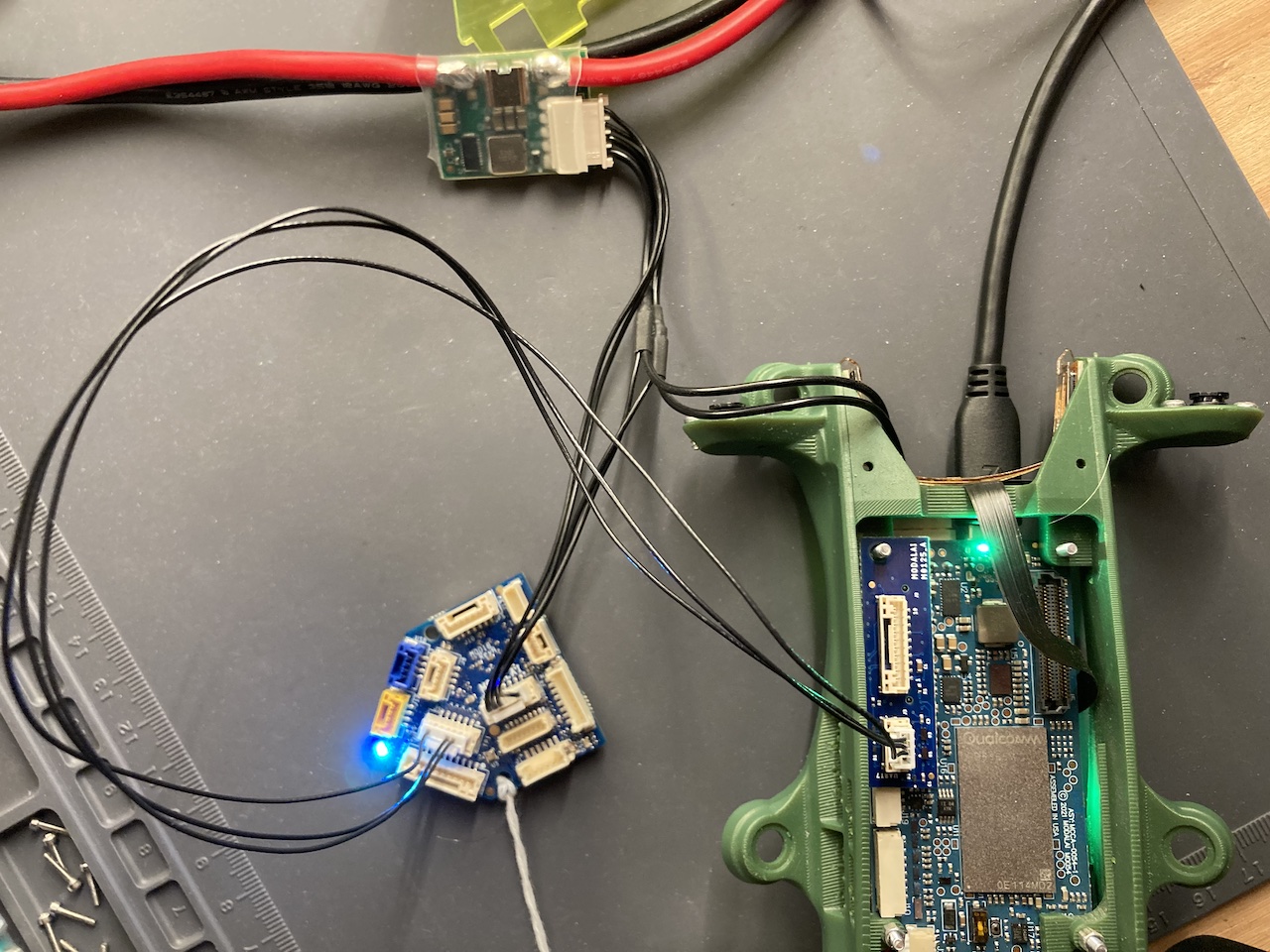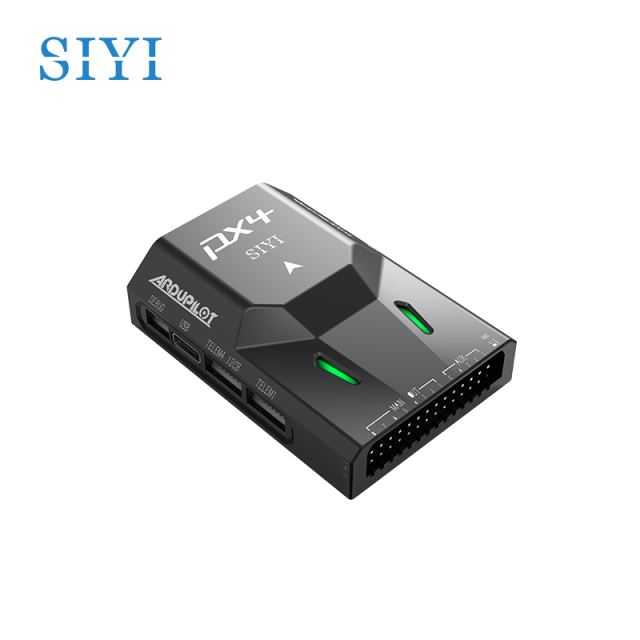Unequaled Accuracy: SparkNavi Drone Flight Controller and GNSS/INS Made in Taiwan
Unequaled Accuracy: SparkNavi Drone Flight Controller and GNSS/INS Made in Taiwan
Blog Article
Recognizing the Essential Attributes and Functions of a Drone Flight Controller for Optimal Aerial Efficiency
The flight controller works as the critical element in a drone's design, coordinating its activities and ensuring stability via an innovative interaction of sensors and data processing. Understanding the essential features and features of these controllers is essential for taking full advantage of airborne efficiency, as they dictate not only navigational precision but also total safety and security and dependability. With innovations in modern technology, the landscape of flight controllers is rapidly advancing, triggering a better exam of what really specifies ideal performance in this important system. What implications do these growths hold for both lovers and professionals in the field?
Review of Trip Controllers
When discovering the globe of drone modern technology, understanding flight controllers is necessary for both specialists and hobbyists alike. Trip controllers function as the brain of the drone, coordinating its motions and making sure security throughout flight (SparkNavi drone flight controller and GNSS/INS made in taiwan). They refine data from different sensing units, including barometers, accelerometers, and gyroscopes, to preserve stability and reply to pilot inputs successfully
The style of flight controllers can differ substantially, ranging from fundamental variations created for entry-level drones to innovative systems equipped with advanced attributes for expert applications. The assimilation of GPS abilities makes it possible for accurate navigation and positioning, while programmable firmware allows customers to tailor trip characteristics to match their particular demands.
In addition, trip controllers are critical in facilitating communication in between the drone and the push-button control, enabling real-time adjustments and telemetry data transmission. Comprehending the various kinds of flight controllers, including multi-rotor, fixed-wing, and hybrid systems, is crucial for choosing the suitable design for a given application. Ultimately, a detailed understanding of flight controllers not just improves the flying experience but likewise takes full advantage of the performance and safety and security of drone operations.
Secret Functions of Trip Controllers
Trip controllers play a pivotal role in managing a drone's trip dynamics by implementing several crucial functions that make sure security and responsiveness. One of the key functions is the stablizing of the drone's alignment and altitude. This is attained with the combination of various sensors, including gyroscopes, accelerometers, and measures, which continuously check the drone's setting and activity.
.png)
Another essential function is the handling of control inputs from the pilot or autonomous systems. The flight controller translates these inputs and adjusts the drone's electric motor rates appropriately to accomplish the preferred flight course. This consists of managing roll, yaw, and pitch, which are crucial for ability to move.
In addition, flight controllers are furnished with sure devices. These features are designed to reply to critical scenarios, such as low battery degrees or loss of signal, by launching predefined actions like returning to the launch factor or floating in place.

Crucial Features to Consider
Numerous crucial features should be thought about when picking a drone trip controller to ensure optimal efficiency and dependability. One vital facet is the controller's processing power, which determines its capacity to handle intricate trip algorithms and real-time information processing. A greater processing ability improves responsiveness and security throughout trip.
One more vital feature is the variety of supported trip modes. A versatile flight controller ought to use different modes, consisting of acro, altitude hold, and GPS-assisted modes, satisfying various pilot skill levels and operational situations. In addition, the existence of integrated safety features, such as fail-safes and geofencing, can dramatically boost operational safety and security.
Compatibility with different interaction procedures is likewise crucial, as it ensures smooth combination with various other tools and peripherals, such as remote controllers and telemetry systems. The controller's firmware should be straightforward and frequently upgraded to include new functions and optimizations.
Assimilation With Sensing Units and Solutions
A flight controller's efficiency is greatly affected by its ability to integrate with numerous sensing units and systems. This combination is crucial as it makes it possible for the flight controller to receive real-time information essential for efficient flight administration. Key sensing units consist of GPS, inertial dimension units (IMUs), measures, and magnetometers, each providing crucial info pertaining to the drone's positioning, elevation, and position.

Additionally, advanced trip controllers support combination with haul systems, consisting of cameras and other sensors, making it possible for boosted performances such as autonomous navigating and obstacle avoidance. This interconnectedness not just enhances the drone's functional capabilities however likewise broadens its application possible throughout various industries, from aerial photography to farming monitoring. Therefore, a well-integrated flight controller is fundamental for attaining ideal aerial efficiency and making sure the dependability of drone procedures.
Tips for Optimizing Efficiency
To take full advantage of the performance of your drone, several vital techniques can be utilized that concentrate Learn More Here on optimizing both software and hardware elements. Make certain that the flight controller firmware is up to day. Producers regularly launch updates that improve stability, boost performance, and fix bugs. On a regular basis looking for these updates can substantially influence your drone's efficiency.
Following, adjust your sensors, including the accelerometer and gyroscope, to make certain accurate readings. Proper calibration lessens drift and boosts flight stability, specifically throughout facility maneuvers. Additionally, think about updating the equipment components, such as electric motors and propellers, to enhance drive and efficiency. Premium props can minimize drag and rise trip time.
Moreover, enhance your drone's weight by minimizing unnecessary payloads. A lighter drone not only does far better but likewise prolongs battery life. Finally, fine-tune your trip setups, including PID (Proportional, Indispensable, Acquired) values, to achieve responsive and smooth handling. By carrying out these techniques, drone drivers can substantially improve airborne performance, leading to an extra reliable and pleasurable flying experience.
Final Thought
In final thought, an extensive understanding of drone flight controllers is crucial for enhancing aerial performance. By focusing on these elements, drivers can significantly raise the performance and integrity of their Our site drone systems in diverse applications.
Trip controllers serve as the mind of the drone, orchestrating its movements and ensuring stability throughout flight.Flight controllers play a crucial role in managing a drone's flight dynamics by executing several essential features that ensure security and responsiveness. The trip controller analyzes these inputs and changes the drone's motor speeds accordingly to accomplish the wanted flight path.Countless crucial features should be taken into account when choosing a drone flight controller to ensure optimum performance and dependability. Therefore, a well-integrated flight controller is essential for his comment is here accomplishing optimum aerial performance and making certain the reliability of drone operations.
Report this page